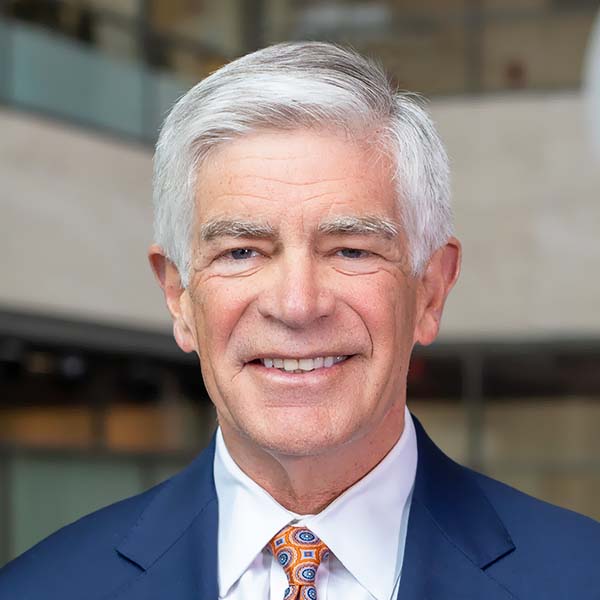Hello and welcome! It’s great that so many of you have joined us for these virtual office hours. And by holding this event virtually, we are missing out on useful hallway conversation — not to mention some tasty snacks — but it’s terrific so many of you were able to join with just the click of a button.
Now, before we proceed, I have to give you my standard Fed disclaimer: The views I express today are my own and do not necessarily reflect those of anyone else on the Federal Open Market Committee or in the Federal Reserve System.
The Importance of Community Banks
Here at the Fed we wear many hats: We’re a bank, a supervisor and regulator of other banks, and the largest collection of economists in the world. We have the ability to lend money, to foster payments and settlements, and to promote consumer protection and community development.
We also have the power to convene. And that is precisely our aim with this program: to facilitate face-to-face discussions with individual banks and fintech firms about responsible financial innovation. We’re delighted you’re here to learn more about how innovation and technology are impacting the financial landscape.
These meetings can be two-way learning opportunities for all participants. Banks have tremendous regulatory expertise, and fintech firms have deep wells of innovation expertise. But this will also be a learning experience for us here at the Federal Reserve. Your insights are crucial to what we do here every day — so please don’t hold back.
I’m particularly glad that we have so many representatives from small community banks here. While I probably don’t need to belabor the importance of community banks to this particular audience, I think it sometimes gets lost just how central community banks are to our economy — and indeed, to American society.
Just consider the numbers. There are more than 4,800 active community bank charters across the country. And of those, almost exactly half are in communities with fewer than 50,000 residents. Community banks — those with $10 billion or less in assets — collectively hold more than $3 trillion in assets. You don’t need to rewatch It’s a Wonderful Life for the hundredth time to get a sense of how vitally important these institutions are.
COVID-19 and its associated economic effects not only emphasized the importance of community banks; they have also heightened the risks to the sector in a world where more and more business is conducted online.
Given their strong relationships with local businesses, community banks were absolutely essential to operating the Paycheck Protection Program (PPP), which kept so many small businesses afloat during the pandemic. According to my Fed colleague, Governor Michelle Bowman, community banks have made up about 40 percent of the total value of PPP loans issued. It’s probably no exaggeration to say that the PPP would have failed without community banks’ support.
Opportunities and Challenges
But economic shutdowns imposed to curtail the spread of COVID-19 — particularly those that shuttered bank branches — also demonstrated just how important digitization is and the perils of falling behind on financial innovation and fintech.
Online platforms have gobbled up an increasing number of home mortgages, for instance. And one banker in our area here in the Third District recently told me that because of labor shortages in his area, he has been unable to reopen his bank lobbies even as the pandemic has waned. If these trends hold, expect more and more use of digital solutions.
During these office hours, I would encourage bankers to consider digitization opportunities for your institution and customers, as well as innovative opportunities that align with your strategic plans. And tomorrow, we will hear from District bankers about their experiences with fintech partnerships and innovation.
There are many opportunities, not only for serving your existing customers but also for reaching new populations. Think of the creative ways fintech could be deployed to reach the under- or even unbanked, for instance.
I understand, of course, that there are challenges. Smaller banks often simply don’t have the workforce or the cash to first research and investigate and then to ultimately invest in costly fintech platforms. They lack the economies of scale that bigger banks enjoy. Set-up costs can be prohibitive. And, to be frank, there are occasional cultural differences between the “move fast and break things” ethos of many fintech suppliers and the more risk-averse sensibilities of bankers.
And those risks are real. Consider the astonishing rapidity of technological development. There are serious and understandable concerns: What if a year or two after making an expensive fintech investment, the technology has already become obsolete? You don’t want to be stuck with a bunch of buggy whips a year after the invention of the Model T.
And there can be a hesitancy to embrace new technologies on the client side, too, of course. Paper checks and cash, for instance, have endured in part because people are so comfortable with them.
It is precisely because of these opportunities and these risks that these office hours are such a great opportunity for all of us. Constructive dialogue among banks, fintech firms, and the Federal Reserve will help us to listen and learn from each other.
The Federal Reserve, for its part, is very supportive of innovation. We’re here to convene, to support, and to supervise.
We will now hear from Bill Spaniel, head of supervision at the Philadelphia Fed, and Board of Governors Deputy Director Art Lindo on community bank partnerships.
Thanks again and enjoy the event.
- The views expressed here are the speaker’s own and do not necessarily reflect those of anyone else in the Federal Reserve System.

